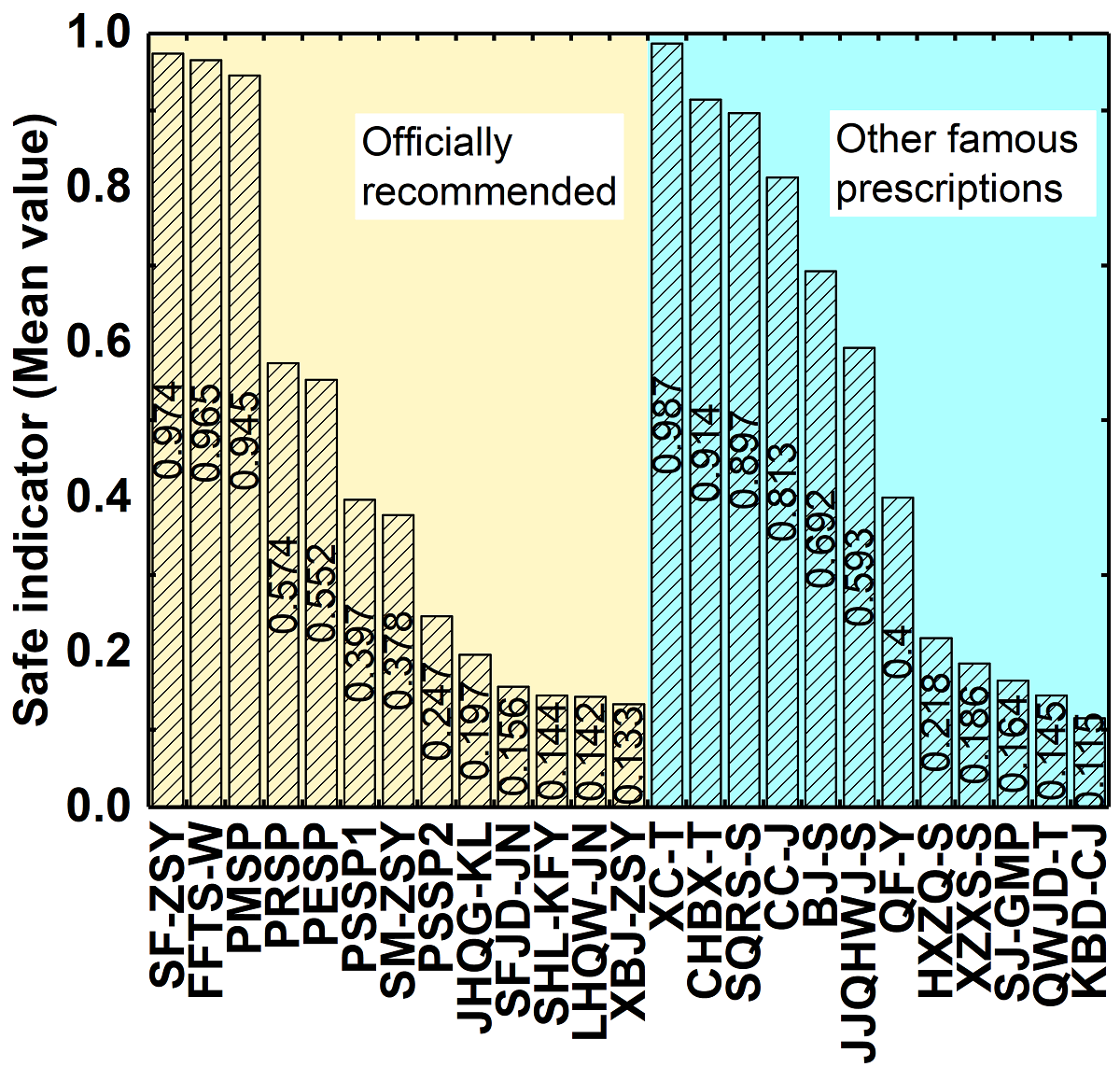Ethnopharmacological relevance: Novel coronavirus disease (COVID-19) outbroke in Wuhan has imposed a huge influence onto the society in term of the public heath and economy. However, so far, no effective drugs or vaccines have been developed. Whereas, the Traditional Chinese Medicine (TCM) has been considered as a promising supplementary treatment for the disease owing to its clinically proven performance on many diseases even like severe acute respiratory syndrome (SARS). Meanwhile, many side-effect (SE) reports suggest the SE of the TCM prescriptions cannot be ignored in curing the COVID-19, especially because COVID-19 always simultaneously leads to dramatic degradation of the patients’ physical condition. How to evaluate the TCM regarding to their latent SE is a urgent challenge. Aim of the study: In this study, we use an ontology-based side-effect prediction framework (OSPF) developed in our previous work and Artificial Neural Network (ANN)-based deep learning to evaluate the TCM prescriptions that are officially recommended in China for novel coronavirus (COVID-19). Materials and methods: Firstly, we adopted the OSPF developed in our previous work, where an ontology-based model separate all the ingredients in a TCM prescription into two categories: hot and cold. Then, we established a database by converting each TCM prescription into a vector containing the ingredient dosage and the according hot/cold attribution as well as the safe/unsafe label. And, we trained the ANN model using this database, after which a safety indicator (SI), as the complementary percentage of side-effect (SE) possibility, is then given for each TCM prescription. According to the proposed SI from high to low, we re-organize the recommended prescription list. Secondly, by using this method, we also evaluate the safety indicators of some other famous TCM prescriptions that are not in the recommended list but are used traditionally to cure flu-like diseases for extending the potential treatments. Results: Based on the SI generated in the ANN model, FTS, PMSP, and SF are the safest ones in recommended list, which all own a more-than-0.8 SI. Whereas, JHQG, LHQW, SFJD, XBJ, and SHL are the prescriptions that are most likely unsafe, where the indicators are all below 0.2. In the extra list, the indicators of XC, XQRS, CC, and CHBX are all above 0.8, and at the meantime, XZXS, SJ, QW, and KBD’s indicators are all below 0.2. Conclusions: In total, there are seven TCM prescriptions which own the indicators more than 0.8, suggesting these prescriptions should be considered firstly in curing COVID-19, if suitable. We believe this work will provide a reasonable suggestion for the society to choose proper TCM as the supplementary treatment for COVID-19. Besides, this work also introduces a pilot and enlightening method for creating a more reasonable recommendation list of TCM to other diseases.

